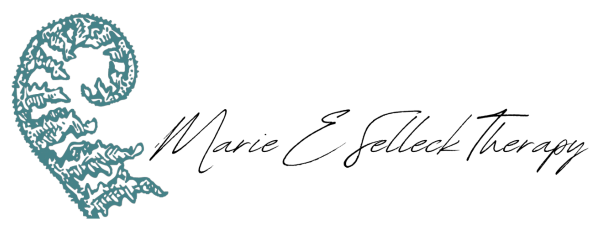Is Brainspotting therapy legitimate? A therapy backed by neuroscience
Have you ever felt stuck with a problem that just won't go away, no matter how hard you try? Maybe it's a fear, a bad memory, or a feeling you can't shake. Maybe you’ve tried changing your thoughts, but regardless of how many times you try to use evidence to correct the thought, the feeling is still there, running the show. Brainspotting helps by working right at the core of automatic felt-senses in the body, which works WAY faster than our talking brain.
The Foundations of Brainspotting
Brainspotting is a type of therapy discovered by Dr. David Grand in 2003 through his work using Eye Movement Desensitization and Reprocessing therapy (EMDR). It's based on the idea that where you look with your eyes can affect how you feel and process emotions. Instead of rapid eye movements like used in EMDR, Brainspotting find a spot a sits with it.
This might sound strange, but there's actually a lot of science behind it!
Brainspotting is based on the profound connection between our visual field and the subcortical regions of our brain (automatic brain). The therapy operates on the principle that where we look with our eyes can directly correlate with stored emotional and physical experiences
By identifying specific eye positions, called "brainspots," therapists can help clients access, process, and ultimately resolve deeply held traumas, negative emotions, and physical pain
This approach is grounded in the neurobiological understanding that our eyes are essentially an extension of our brain. As Billie, an experienced therapist, explains, "Our eyes are essentially just a part of our brain, made of neural cells. They are one of the first organs to develop in utero and come from brain cells. There are six major muscles that are connected to our eyes, and those muscles are connected to all of the pathways of the brain"
The Neuroscience Behind Brainspotting
Brainspotting's legitimacy as a therapy is reinforced by neuroscience. The technique taps into the brain's natural self-scanning capacity to process and release focused areas that are in a maladaptive state
When you go to a Brainspotting session, the therapist helps you find a "brainspot." This is a specific eye position that's connected to the emotional issue you're dealing with. When a brainspot is identified and activated, it triggers a reflexive response such as an increase in “activation” or “felt-sense” in the body. This response is an indication that the therapy has accessed a neurophysiological source of emotional or physical distress.
Here's the cool part: by looking at this spot, you're actually helping your brain process emotions and experiences that might be "stuck" deep inside. It's like giving your brain a special key to unlock and heal from difficult experiences.
Furthermore, Brainspotting, similarly to EMDR, often incorporates biolateral sound stimulation, which mimics the natural processing pathways of REM sleep. This dual activation helps both hemispheres of the brain work together in processing trauma, offering a more holistic healing approach compared to traditional talk therapy
Brainspotting vs. Other Therapies
While Brainspotting shares some similarities with other trauma-focused therapies like EMDR, it has distinct features that set it apart. Unlike EMDR, which involves moving the eyes back and forth to process trauma, Brainspotting focuses on finding a single spot where the client feels a strong emotional or physical response and staying there.
This focused approach allows for a deeper and more targeted processing of traumatic experiences. Some therapists trained in both EMDR and Brainspotting explain the difference in reference to climbing a mountain. EMDR is like going around the mountain and working your way to the top and it takes time. While Brainspotting is like going directly to the top of the mountain and so processing is more pinpointed, direct, and as a result, faster.
The Therapeutic Process
A typical Brainspotting session involves the therapist guiding the client to focus on the felt-sense associated with an issue. As the client does this, the therapist observes their eye movements and reflexes to identify potential brainspots. Once a brainspot is located, the client is encouraged to maintain their gaze on that spot while simultaneously focusing on their internal experience and what comes up for them. Client’s are encouraged to treat it as though they are watching a movie. They can’t change what comes up whether it is thought or images, but they can allow their body to experience the emotions and felt-senses as they watch. It is common for the nervous system to process feelings in waves.
This dual focus allows the client to access and process deeply held emotions and physical sensations associated with the issue and/or trauma. The therapist provides support and guidance throughout this process, helping the client navigate through any intense emotions or physical reactions that may arise.
David Grand describes Brainspotting as a "neuroexperiential model." It's a way of healing that works with both your brain (neuro) and your experiences.
Conclusion: A Legitimate and Promising Therapy
Brainspotting has established itself as a legitimate therapy by effectively bridging the gap between traditional psychotherapy and modern neuroscience. Its foundation in neurobiological principles, combined with growing clinical evidence of its effectiveness, makes it a promising approach for treating a wide range of psychological issues.
As research in neuroscience continues to advance our understanding of the brain-body connection, therapies like Brainspotting are likely to gain even more recognition and acceptance in the mental health field. For individuals struggling with trauma, anxiety, substance abuse, or other psychological challenges, Brainspotting offers a unique and powerful path to healing that is firmly grounded in scientific understanding.
While more research is needed to fully understand the mechanisms and long-term effects of Brainspotting, its growing popularity among therapists and positive client outcomes suggest that it is indeed a "legit" therapy with significant potential to help individuals overcome psychological obstacles and improve their overall well-being.' Learn more about Brainspotting.



